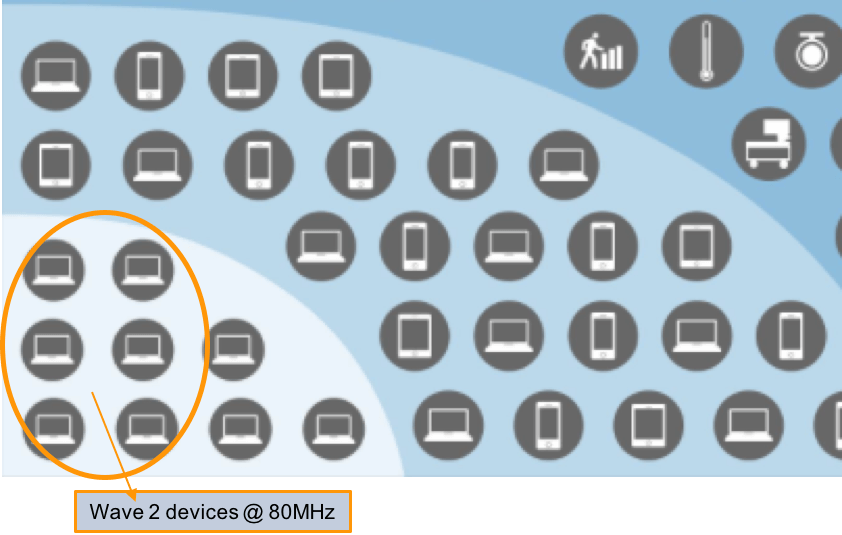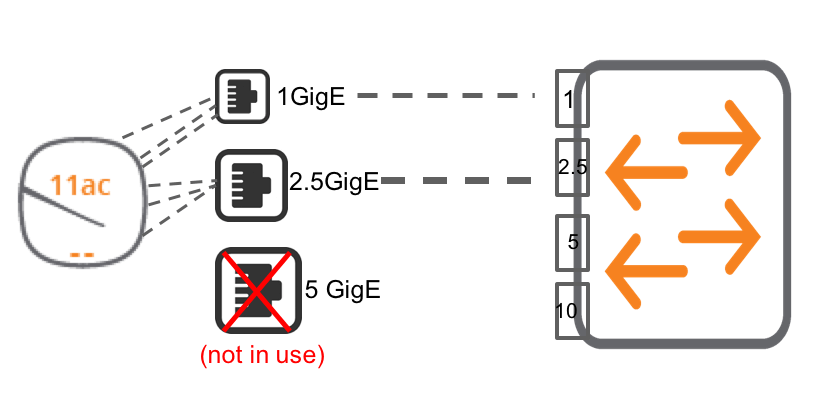The spring of 2016 is a busy season for many wireless vendors. Before the flame of the previous 802.11ac Wave 2 cooled down, another Wave 2 that touted the support of multi-gigabit Ethernet was pushed out, adding more heat to the already hot wireless market.
With the influx of user devices, mobile applications and Internet of Things (IoT) in new digital workplaces, enterprises are thirsty for higher data capacity. While some vendors out there are claiming unrealistic data rates up to 5.2Gbps and telling you that you need a 5Gbps Ethernet port, you should be asking these questions:
- Can we really achieve a data throughput as high as 5.2Gbps, given the dismal number of 160MHz channels available, and the necessary overheads during the data transmission?
- How much data traffic can actually flow through the uplink port?
There are a few assumptions we need to make in order to require the claimed "need" for a 5Gbps uplink:
First, the access point must be operating at 160MHz with 160MHz capable devices;
Second, the customer must be willing to or able to deploy dual 5GHz radios – sorry, no 2.4GHz devices will be supported in this network and this assumes that it is even possible to isolate the radios from cross-interference with both running in the same band;
Third, no data transmission overheads.
Let's take a look how realistic those assumptions are. As of today, there are about 50 different MU-MIMO (Wave 2) capable devices in the market; and none of them support 160MHz operation. The network vendors and device vendors are normally two separate business entities, and the device vendors tend to be slower when moving to the new technologies or standards. Without the presence of 160MHz capable devices, the access point will actually operate in 20, 40 or 80 MHz mode, in which the data rate will be dropped to half or lower. Assuming the vendor claims to support 2.6Gbps with 3SS @160MHz, now the data rate will be 1.3Gbps maximum @ 80MHz. However, if a vendor can support 4x4:4SS for MU-MIMO, rather than 3SS, the peak data rate @ 80MHz will be increased to 1.7Gbps, which is more realistic than a touted 2.6Gbps @ 160MHz. Figure 1 shows the pool of Wave 2 clients that support 80MHz only in an enterprise environment.

Figure 1: Wave 2 clients @ 80MHz in an enterprise environment
Let's take one step back and assume deploying dual 5GHz radios is realistic although we know it is not due to some challenges:
- Minimizing antenna coupling to isolate the two 5GHz radios and avoid interference
- Adding extensive filtering to suppress signals from the other 5GHz radio which is transmitting
The aggregate peak data rate will be 2.6Gbps without counting on any overhead or giving any consideration to the mix client environment that may include legacy 802.11 a/b/g/n clients. That said, the highest data capacity we can expect, in this case, will surely be under 2Gbps or close to 1Gbps. Figure 2 illustrates the data traffic that flows through the 1G and 2.5G Ethernet ports.

Figure 2: The data traffic flows through the 1G and 2.5G Ethernet ports
Now we know the maximum data traffic that flows through the uplink ports. Do we need to right-size the uplink to avoid unnecessary cost while we assure the highest performance of the Wi-Fi network? Sure remember - Less is More!
Instead of touting the lavish and unrealistic features to draw attention, it might be better to face the reality together with the customer. The WLAN peak data rate may reach 5Gbps or even higher with future generations of 802.11ac, 802.11ad or 802.11ax. However, not until then, we won't see the need of 5GigE; and the 1GigE and 2.5GigE will be the correct uplinks for a right sized WLAN network.
You may wonder if we can "future proof" the investment of a higher Ethernet uplink like 5G. That's the decision the customer has to make whether they want to invest in something that is not useful at all today. Please keep in mind, the wireless device refresh cycle is normally much shorter than the wired devices – 3 years vs. 7 years?! With the new wireless technology rationalized almost every year, we expect to see more exciting features included in the new wireless standards in coming years. With the maturity of the device market, the Wi-Fi technology will be able to call out the support of a higher capacity uplink - 5G or even 10G Ethernet. Until then, you may not want to invest in the "future" and be trapped by some marketing dazzle.
Learn more about multi-gig Ethernet here:




